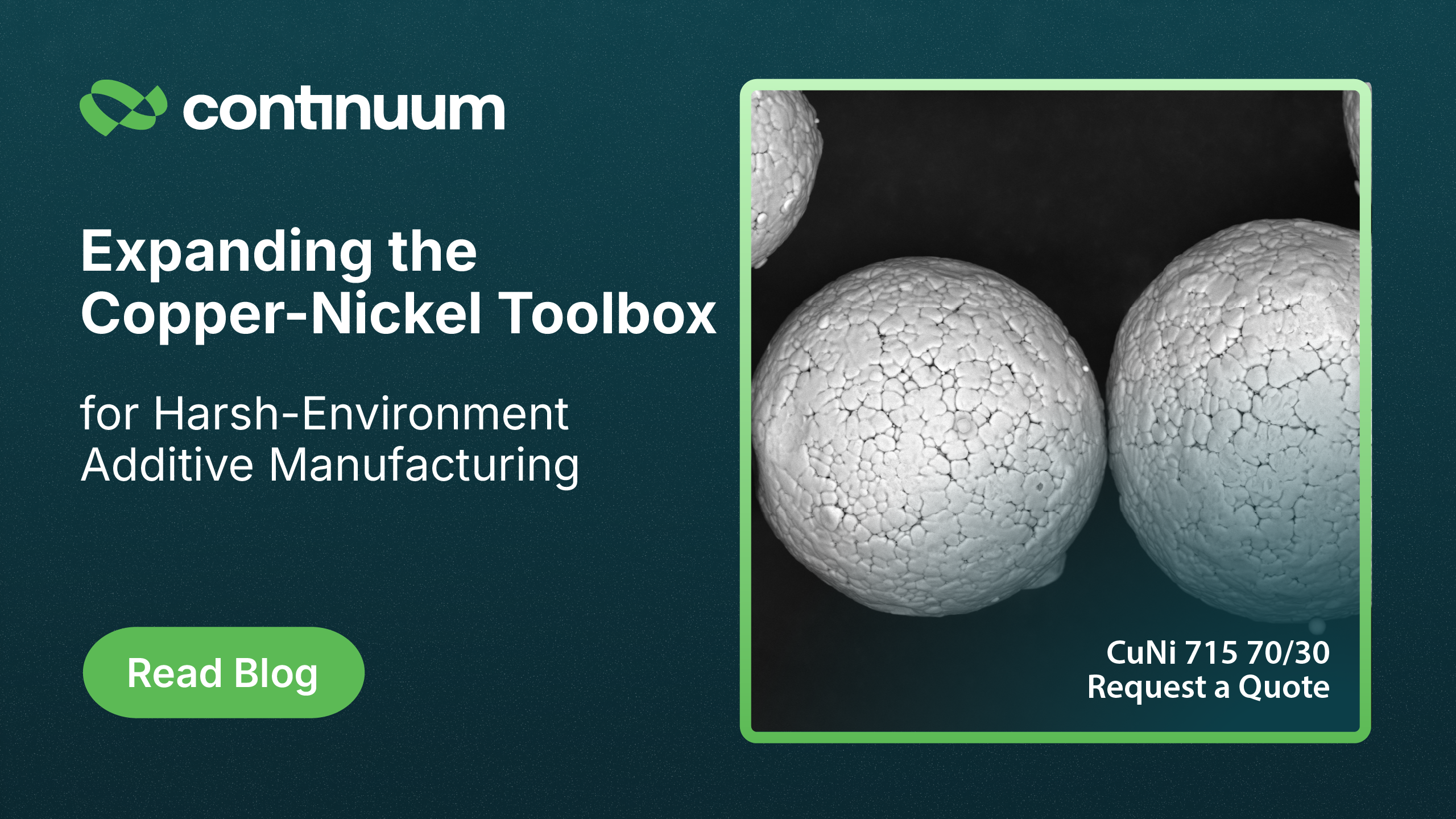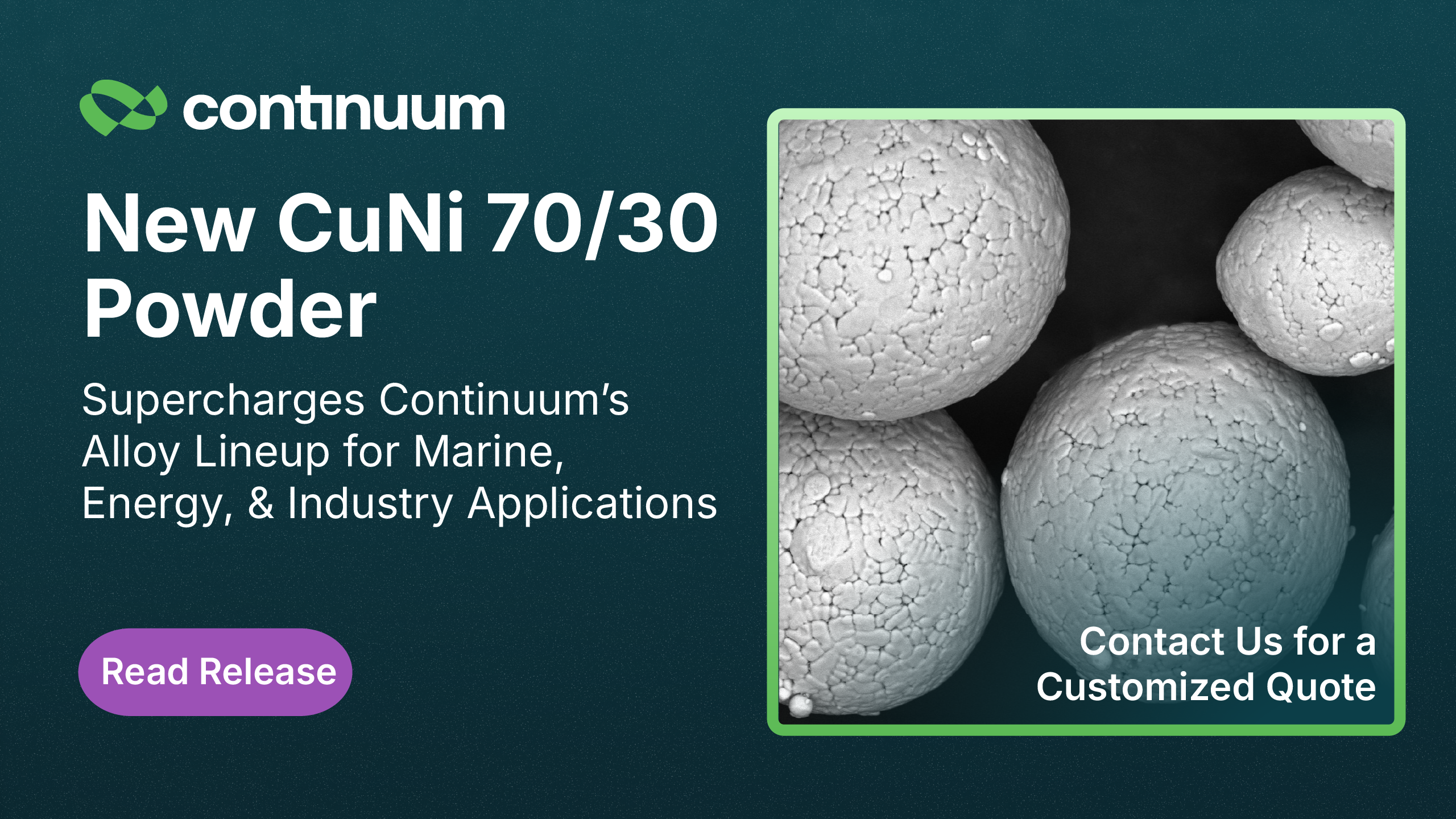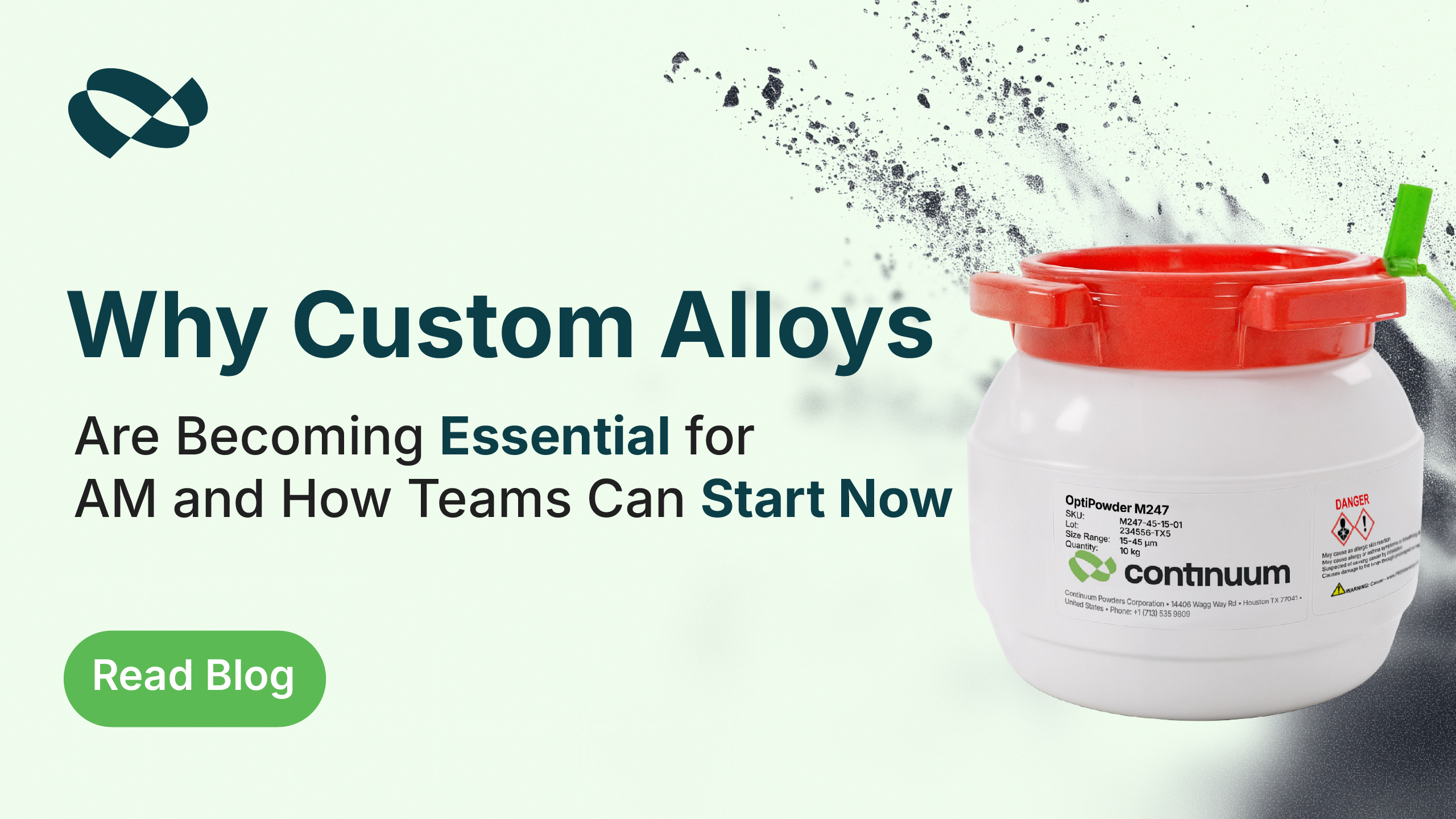In an industry where material quality is non-negotiable and sustainability targets are tightening; Continuum Powders is proving that circularity and performance can go hand in hand. Their recent webinar, Reclaiming Value: Turning Nickel Scrap into Sustainability, Savings & Supply Chain Strength, brought together leading voices from academia, research, and manufacturing to unpack the real-world implications of a bold new model for sustainable metal powder production.
Watch Webinar Replay:
A Groundbreaking Study on Nickel Powder’s Carbon Footprint
The centerpiece of the session was a Life Cycle Assessment (LCA) conducted by Oregon State University (OSU), which quantified the environmental impact of Continuum’s proprietary Melt-to-Powder (M2P) process. The results were striking: up to 99.7% reduction in carbon emissions compared to conventional powder production methods using virgin materials.
Dr. Karl Haapala, Professor at OSU’s School of Mechanical, Industrial, and Manufacturing Engineering, explained, “The core question we set out to answer was: What if we reimagined the way we source and process metal powder? We were impressed not just by the emissions reduction, but by how consistent the results were across the supply chain.”
His colleague, Dr. Kamyar Raoufi, added that Continuum’s access to recycled, aerospace-grade nickel scrap—combined with green-powered operations—played a key role. “When you combine renewable electricity, efficient plasma-based atomization, and green gas sourcing, you can materially change the environmental profile of powder manufacturing,” Raoufi noted.
The Technology Behind the Transformation
Sunil Badwe, Vice President of R&D at Continuum Powders, walked the audience through how the M2P process works. “Traditional powder production starts with mining, refining, melting, and multiple processing stages. Each one adds energy consumption, emissions, and cost,” he said. “We bypass that by starting with certified scrap metal and using a single-step plasma atomization process that ensures purity, consistency, and performance.”
Badwe emphasized that the company’s goal is not to simply recycle material but to engineer it with performance in mind. “Our powders aren’t just recycled—they’re precision-made for demanding applications like LPBF, MIM, HIP, and DED. We control particle size, flow behavior, and surface chemistry from the very beginning,” he said.
Real-World Application: Rev-Tec’s Circular Manufacturing Model
Perhaps the most compelling part of the webinar came from someone putting Continuum’s approach into practice: Michael Ferrelli, President of Revolutionary Technologies (Rev-Tec). His company specializes in metal 3D printing and precision component manufacturing for aerospace and defense.
“We source scrap nickel alloy, like Inconel 718, from our operations and partner networks,” said Ferrelli. “Instead of treating it as waste, we send it to Continuum to be converted into ASTM-grade powder. We then use that same powder to produce high-performance parts for our customers.”
This closed-loop model isn’t just a sustainability win—it’s also smart business. “Using Continuum’s powder, we’re seeing savings of 20–30% on material costs, plus improved lead time stability. It’s a hedge against geopolitical risk and price fluctuations,” Ferrelli explained.
He was quick to point out that performance hasn’t been sacrificed: “These powders print clean, sinter well, and meet the same specs we’d expect from virgin-based material. In fact, the consistency has been better in some cases.”
A Model for the Future of Manufacturing
The panel closed with a broader discussion about the implications of this model. As more manufacturers face scrutiny from customers, regulators, and shareholders, aligning material strategy with ESG goals is becoming a business imperative—not just a sustainability gesture.
“There’s a narrative shift happening,” said Dr. Haapala. “Sustainable sourcing isn’t just a cost—it’s a competitive advantage. This data helps make that case with confidence.”
Sunil Badwe echoed that sentiment, noting that Continuum is now fielding increasing interest from OEMs looking to develop custom alloys within a recycled framework. “This isn’t niche anymore. The demand for low-carbon, high-performance powders is real—and we’re building the infrastructure to support it at scale.”
A Call to Action for the AM Industry
The webinar underscored that real change in the metals industry doesn’t come from theory—it comes from collaboration between research institutions, manufacturers, and solution providers. Continuum’s model of closed-loop powder production is a working example of that principle in action.
“Carbon reduction, cost control, supply chain resilience—these are not separate initiatives anymore,” said Ferrelli. “They’re integrated strategies. Working with Continuum lets us check all three boxes.”
As additive manufacturing continues to mature, models like this could be pivotal in shaping a more agile, circular, and competitive supply chain for critical materials.
About the Speakers:
- Dr. Karl Haapala is a Professor at Oregon State University and a leading researcher in sustainable manufacturing and life cycle engineering.
- Dr. Kamyar Raoufi is a postdoctoral scholar at OSU with expertise in sustainability metrics and additive manufacturing.
- Dr. Sunil Badwe is Vice President of R&D at Continuum Powders, with over 20 years of experience in metallurgy and process optimization.
- Michael Ferrelli is President of Rev-Tec and a champion of sustainable metal AM practices for aerospace and defense.
This webinar was originally recorded in partnership with 3dprint.com and hosted via their platform.


